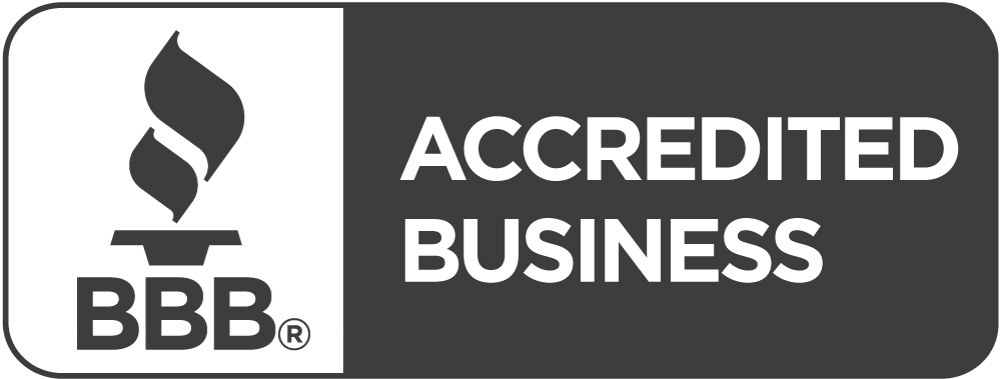Do you want to start an HVAC business but don’t know where to start? We can help! Read on to discover all you need to know about starting an HVAC business today!

After years of working in the heating, ventilation, and air condition (HVAC) industry and learning the ins and outs of leaky spigots and broken compressors, you may be ready to start your own HVAC company.
To ensure your HVAC business gets up and running without a hitch, it’s important to establish a business plan that provides a strong foundation from which your business can grow.
Curious to know where to go next? Read this comprehensive guide and follow these steps for how to start your own HVAC business.
Step #1: Obtain a State License
When starting an HVAC business, it’s important to know the rules and requirements of the state you’re operating in. Some states require contractors to have a general license, while others require contractors to obtain an specific HVAC license through the state.
For example, to work as a contractor in Texas, you’ll need to have a minimum of 4 years of HVAC experience and must pass the issued exam. Meanwhile, in Pennsylvania, there are no state licensing requirements for contractors. However, there may be some at a local level.
Want to know which states don’t have state licensing requirements? Here’s the complete list:
- Colorado
- Illinois
- Indiana
- Kansas
- Maine
- Minnesota
- Missouri
- Nebraska
- New Hampshire
- New York
- Pennsylvania
- South Dakota
- Vermont
- Wyoming
Everyone Needs Insurance
While you may or may not need a license in the state you’re operating in, you’ll definitely need insurance to guarantee that you’re covered and safe while on the job. So, what kind of insurance might you need?
The two primary insurance policies you may want to consider as an HVAC contractor are:
- General liability insurance – This coverage protects your customers in case you cause any bodily injuries, property damage, or advertising injury. If your business is sued over any of these issues, it will also cover your legal fees.
- Workers compensation insurance – This coverage protects you and your employees in case they get sick or injured while on the job. It also includes medical and death benefits. Unlike general liability, this insurance may be required by your state.
Step #2: Create a Business Plan
A well-thought-out business plan contains everything you need to know about how your business is structured. You can use it to brainstorm funding and marketing strategies as well as show investors that your business is viable, valuable, and investable.
When formulating your business plan, you should provide details into your business operations, marketing strategies, and management structures. To that end, business plans provide a comprehensive overview of how your business will operate, touching on key categories, like:
- Executive summary – This section should provide a brief summary of your business operations and what will be discussed in the rest of the business plan. Outline your products and services, mission statements, and objectives.
- Company description – Provide the legal structure of your business, a brief history of your business, and summaries of your products and services, company growth, and business goals.
- Market analysis – Identify your target market, evaluate your competitors, and provide marketing data that will help you develop a marketing plan.
- Organization and management – Outline the departments in your company, as well as the leadership structure. You can also include detailed descriptions of each employee, including their names, positions, experience, specialties, and skills.
- Service or product line – Describe the products or services your company provides in detail.
- Marketing and sales – Describe how your company will attract and retain customers with marketing strategies, such as in-print advertising or social media profiles.
- Funding request – If you’re asking investors for funding, detail the terms and conditions of your request, including the amount you’re asking for and what you’ll be using it for. When determining how much it will cost to start your business, you will also need to account for additional outsourcing costs, such as hiring a contractor answering service or call center to manage an influx of calls while you are out on the job.
- Financial projections – Predict where your business will be financially in 5, 10, or 20 years. You can include income statements, balance sheets, and cash flow statements.
- Appendix – If applicable, provide supplemental documents like credit reports, resumes, product descriptions, licenses, permits, and other legal documents pertaining to your business.
Determining Business Structures
The structure of your business is one crucial aspect that you’ll need to sort out early on. After you’ve picked out a winning business name, you’ll want to register it with your state. To do so, you’re required to detail what kind of business it is.
Here are the most common options:
- Sole proprietorship – One person is in charge of the business operations, but you, the sole proprietor, are the one responsible for any HVAC business loan or losses in revenue.
- Partnership – Two or more people are in charge of the business operations.
- Corporation – The most complex option, the business is considered independent of the business owners.
- Limited Liability Corporation (LLC) – Combines both a partnership and cooperation structure so you aren’t the only one responsible for the business.
What if you want to change your business structure after you’ve registered it? It’s possible to do so, but it can be an expensive and frustrating endeavor. So, make sure you select carefully.
Step #3: Budget for Start Up Costs
Starting your HVAC business will have a significant startup cost that you must budget for. As you’re creating your business plan and determining how much you’ll need in funding, make sure to consider what you have and what you need in terms of getting started.
After years of working in the HVAC industry, you may already have items such as a reliable mode of transportation and common tools. But, what about business cards, the cost of a state license, or insurance coverage? All that can be worked out in your budget.
While you’re still in the planning stages, consider these common startup costs:
- Borrowing costs
- Insurance
- Website
- Technology expenses
- Additional tools and HVAC equipment
- Advertising and marketing
- Software upgrades
Step #4: Develop a Marketing Plan
A good marketing plan identifies your target market and the channels you’ll use to convert them into long-term clients. An effective marketing strategy typically includes:
- A description of your business
- The market research and analysis on your target market
- An analysis of your HVAC service prices
- An HVAC lead generation strategy
- A profile of your target customer, detailing their age, location, habits, etc.
- An analysis of your competition, including strengths and weaknesses
- Goals and objectives of your marketing strategy
- Marketing methods and channels to attract customers
- Marketing budget
As you work through your plan, you’ll need to conduct a significant amount of research to fully understand your customer base’s wants and needs and where to best find them. For example, if you’re targeting middle-class homeowners with children, you might want to post flyers at local daycare centers, schools, or parks within your neighborhood.
It’s also important to keep track of your successes and HVAC customer retention rate as you go along, so you’ll know what worked and what didn’t and adapt accordingly.
Types of Marketing Strategies
Need some inspiration for how to market your business? Use this list to explore your options and find the ones that work best for you:
- Create infographics to post to your social media
- Offer customers promotional offers for using your services
- Start a customer rewards or loyalty program
- Communicate with customers through emails and newsletters
- Develop a referral program to encourage word-of-mouth marketing
- Start a blog where you communicate ideas related to HVAC
- Offer customers a trial service
Step #5: Build Your Online Presence
Once you have a good grasp of your business operations and plans, you can find effective ways to reach new customers. A strong online presence can help spread the word about your business to new customers outside of your immediate circle. Consider these options:
- Website – Your website is the first place customers go to learn more about your services and to find your contact information. Make sure it’s easy to navigate, reflects your brand’s personality, and offers credible, glowing reviews.
- Social media – Want to connect with existing and potential customers? Social media is effective for building and sustaining customer relationships and crowdsourcing feedback.
- Online business listings – With services like Google or Yelp, you can create a business listing, or public profile, to cater to your local customers. It gives customers quick and easy access to your business hours, phone number, address, and other important information.
Nowadays, there are a variety of ways to broaden your business’ digital presence. It’s all about using the method that works best for your business and aligns with your company values.
Benefits of an Online Presence
Whether you’re a small business owner or a large company looking to expand your operations, an online presence is an important method for connecting with customers. The benefits of having an online presence include:
- An increase in brand awareness and the potential to reach a wider audience
- An easier and more convenient way for customers to leave reviews and feedback
- An ability to promote and market your products and services
- Improved communication with your customers and the ability to respond directly to their concerns
Simplify Your HVAC Start-Up with Nexa
Knowing how to start an HVAC business requires considering important factors like budget, operations, and marketing strategies. However, HVAC businesses primarily rely on customer satisfaction for long-term success.
Keep your customers satisfied and your operations on track with Nexa’s virtual receptionist services.
We offer a variety of tools to help maximize your services. Beyond taking phone calls and delivering messages, we schedule appointments and provide customers with information about your business even outside of your normal hours of operation.
With us, your new HVAC business can always be available to customers in need.
If you’re interested in learning more, check out our services and learn how we help you and your company reach new levels of success.
Sources
- HVAC Certification. Texas HVAC Certification and License Requirements. https://www.hvaccertification.org/hvac-license-texas/
- HVAC School. State, County, and Municipal Licensing Requirements for HVAC Technicians and Mechanics. https://www.hvacschool.org/licensing-requirements/#pennsylvania
- Forbes. Workers Compensation Vs General Liability Insurance. https://www.forbes.com/advisor/business-insurance/workers-comp-vs-general-liability/
- U.S. Small Business Administration. Write your business plan. https://www.sba.gov/business-guide/plan-your-business/write-your-business-plan
- Indeed. 5 Common types of Business Structures, Key Advantages and How To Choose One. https://www.indeed.com/career-advice/career-development/business-structure









































































